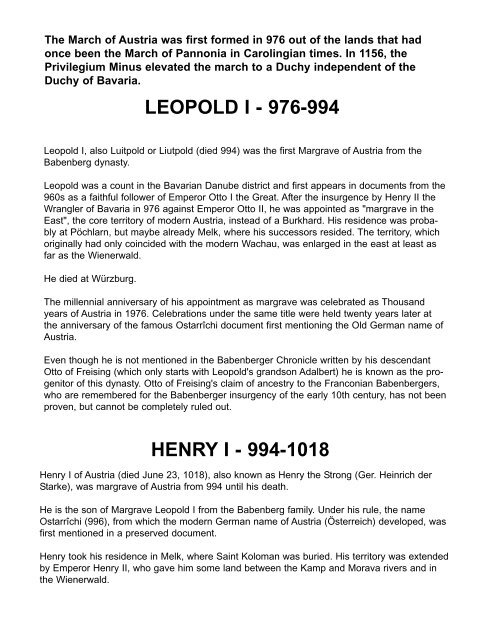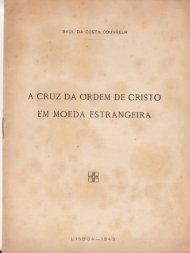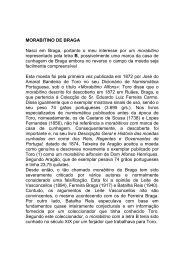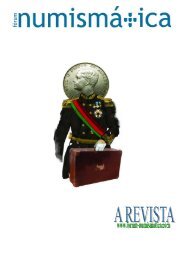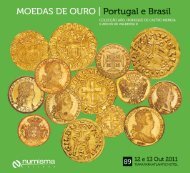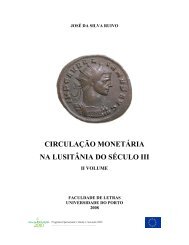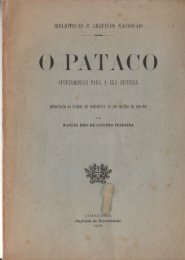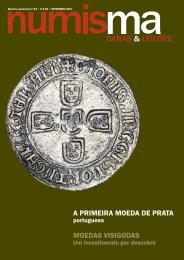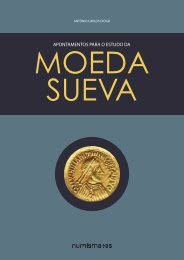Silver Pfennigs and Small Silver Coins of Europe in the Middle Ages
Silver Pfennigs and Small Silver Coins of Europe in the Middle Ages
Silver Pfennigs and Small Silver Coins of Europe in the Middle Ages
You also want an ePaper? Increase the reach of your titles
YUMPU automatically turns print PDFs into web optimized ePapers that Google loves.
The March <strong>of</strong> Austria was first formed <strong>in</strong> 976 out <strong>of</strong> <strong>the</strong> l<strong>and</strong>s that had<br />
once been <strong>the</strong> March <strong>of</strong> Pannonia <strong>in</strong> Carol<strong>in</strong>gian times. In 1156, <strong>the</strong><br />
Privilegium M<strong>in</strong>us elevated <strong>the</strong> march to a Duchy <strong>in</strong>dependent <strong>of</strong> <strong>the</strong><br />
Duchy <strong>of</strong> Bavaria.<br />
Leopold I, also Luitpold or Liutpold (died 994) was <strong>the</strong> first Margrave <strong>of</strong> Austria from <strong>the</strong><br />
Babenberg dynasty.<br />
Leopold was a count <strong>in</strong> <strong>the</strong> Bavarian Danube district <strong>and</strong> first appears <strong>in</strong> documents from <strong>the</strong><br />
960s as a faithful follower <strong>of</strong> Emperor Otto I <strong>the</strong> Great. After <strong>the</strong> <strong>in</strong>surgence by Henry II <strong>the</strong><br />
Wrangler <strong>of</strong> Bavaria <strong>in</strong> 976 aga<strong>in</strong>st Emperor Otto II, he was appo<strong>in</strong>ted as "margrave <strong>in</strong> <strong>the</strong><br />
East", <strong>the</strong> core territory <strong>of</strong> modern Austria, <strong>in</strong>stead <strong>of</strong> a Burkhard. His residence was probably<br />
at Pöchlarn, but maybe already Melk, where his successors resided. The territory, which<br />
orig<strong>in</strong>ally had only co<strong>in</strong>cided with <strong>the</strong> modern Wachau, was enlarged <strong>in</strong> <strong>the</strong> east at least as<br />
far as <strong>the</strong> Wienerwald.<br />
He died at Würzburg.<br />
LEOPOLD I - 976-994<br />
The millennial anniversary <strong>of</strong> his appo<strong>in</strong>tment as margrave was celebrated as Thous<strong>and</strong><br />
years <strong>of</strong> Austria <strong>in</strong> 1976. Celebrations under <strong>the</strong> same title were held twenty years later at<br />
<strong>the</strong> anniversary <strong>of</strong> <strong>the</strong> famous Ostarrîchi document first mention<strong>in</strong>g <strong>the</strong> Old German name <strong>of</strong><br />
Austria.<br />
Even though he is not mentioned <strong>in</strong> <strong>the</strong> Babenberger Chronicle written by his descendant<br />
Otto <strong>of</strong> Freis<strong>in</strong>g (which only starts with Leopold's gr<strong>and</strong>son Adalbert) he is known as <strong>the</strong> progenitor<br />
<strong>of</strong> this dynasty. Otto <strong>of</strong> Freis<strong>in</strong>g's claim <strong>of</strong> ancestry to <strong>the</strong> Franconian Babenbergers,<br />
who are remembered for <strong>the</strong> Babenberger <strong>in</strong>surgency <strong>of</strong> <strong>the</strong> early 10th century, has not been<br />
proven, but cannot be completely ruled out.<br />
HENRY I - 994-1018<br />
Henry I <strong>of</strong> Austria (died June 23, 1018), also known as Henry <strong>the</strong> Strong (Ger. He<strong>in</strong>rich der<br />
Starke), was margrave <strong>of</strong> Austria from 994 until his death.<br />
He is <strong>the</strong> son <strong>of</strong> Margrave Leopold I from <strong>the</strong> Babenberg family. Under his rule, <strong>the</strong> name<br />
Ostarrîchi (996), from which <strong>the</strong> modern German name <strong>of</strong> Austria (Österreich) developed, was<br />
first mentioned <strong>in</strong> a preserved document.<br />
Henry took his residence <strong>in</strong> Melk, where Sa<strong>in</strong>t Koloman was buried. His territory was extended<br />
by Emperor Henry II, who gave him some l<strong>and</strong> between <strong>the</strong> Kamp <strong>and</strong> Morava rivers <strong>and</strong> <strong>in</strong><br />
<strong>the</strong> Wienerwald.


